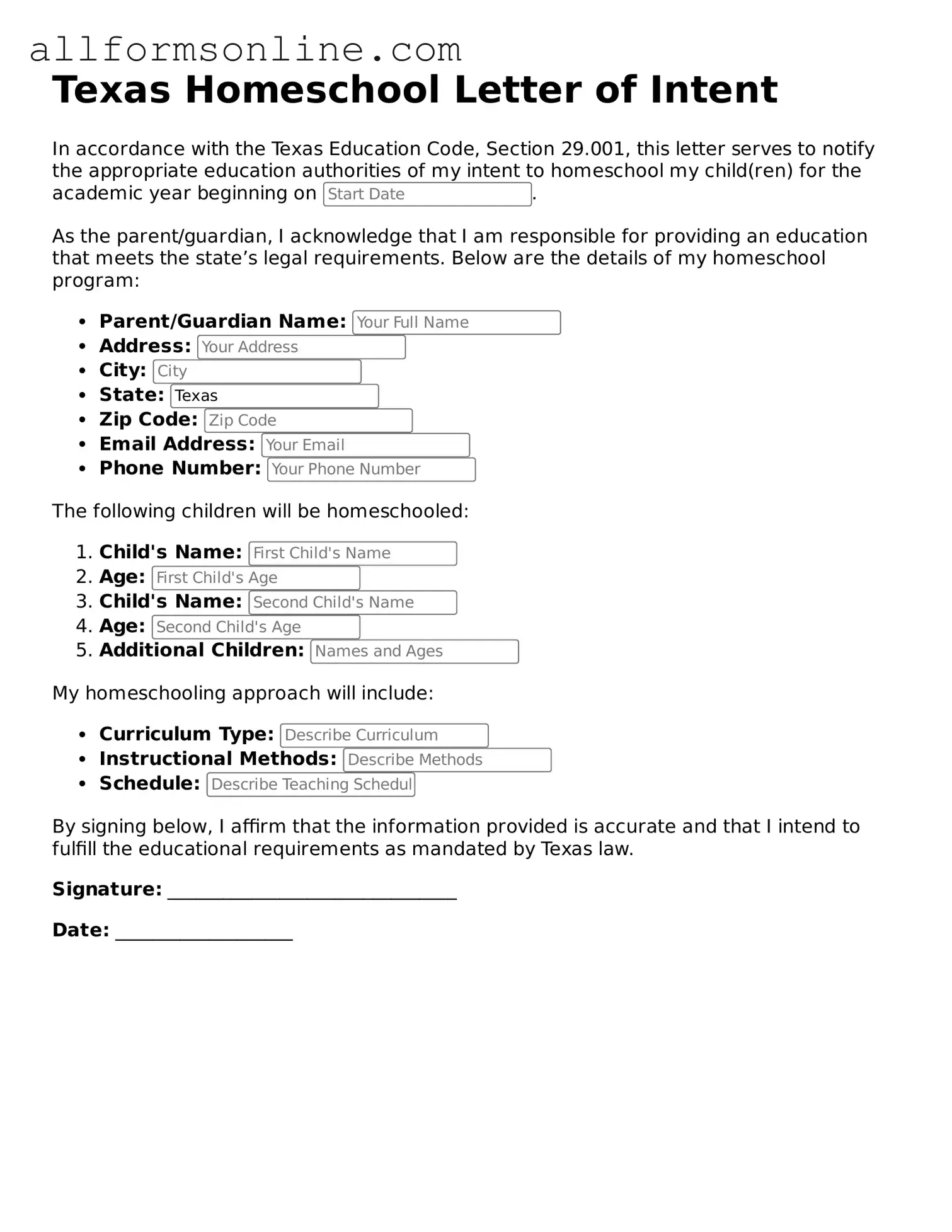What is the Texas Homeschool Letter of Intent form?
The Texas Homeschool Letter of Intent is a document that parents or guardians must submit to officially notify the local school district of their decision to homeschool their children. This form serves as a declaration of the family's intent to provide an education outside of the traditional public or private school system. It is an important first step in the homeschooling process in Texas.
Who needs to submit the Letter of Intent?
Any parent or guardian who chooses to homeschool their child in Texas must submit the Letter of Intent. This requirement applies to children who are of compulsory school age, typically between the ages of 6 and 19. By submitting this form, parents inform the school district that they will be taking responsibility for their child's education.
When should the Letter of Intent be submitted?
The Letter of Intent should be submitted as soon as the decision to homeschool has been made. While there is no specific deadline mandated by state law, it is advisable to file the form at least 30 days before the start of the school year. This allows the school district to process the notification and ensures compliance with Texas homeschooling regulations.
What information is required on the Letter of Intent?
The Letter of Intent typically requires basic information about the student, including their name, date of birth, and the address of the homeschooling family. Additionally, parents may need to provide their own contact information. Some districts may have specific requirements, so it is essential to check with the local school district for any additional information that may be needed.
Is there a specific format for the Letter of Intent?
There is no official state form for the Letter of Intent; however, it should be a written document that clearly states the intention to homeschool. Many families choose to create their own letter or use templates available online. The letter should be concise and include all necessary information to avoid any confusion.
What happens after submitting the Letter of Intent?
After the Letter of Intent is submitted, the local school district will acknowledge receipt of the notification. Parents are not required to wait for a response before beginning their homeschooling journey. However, it is important to keep a copy of the submitted letter for personal records. Parents should also familiarize themselves with any additional regulations or requirements that may apply to homeschooling in their district.
